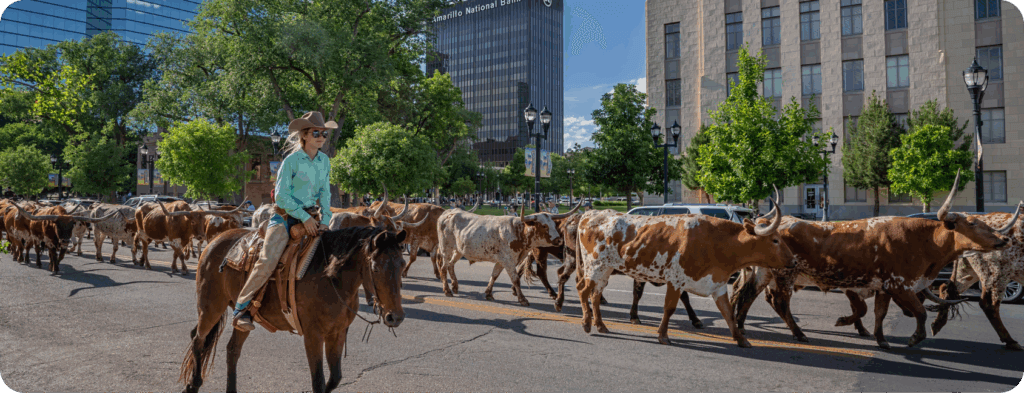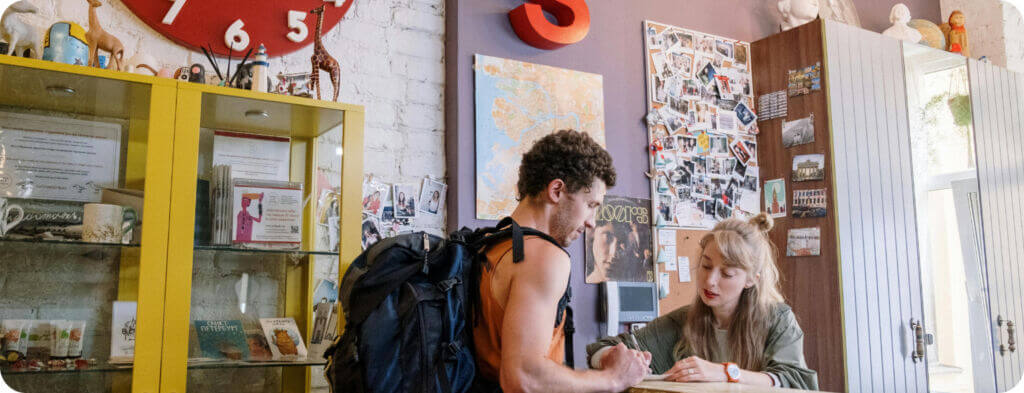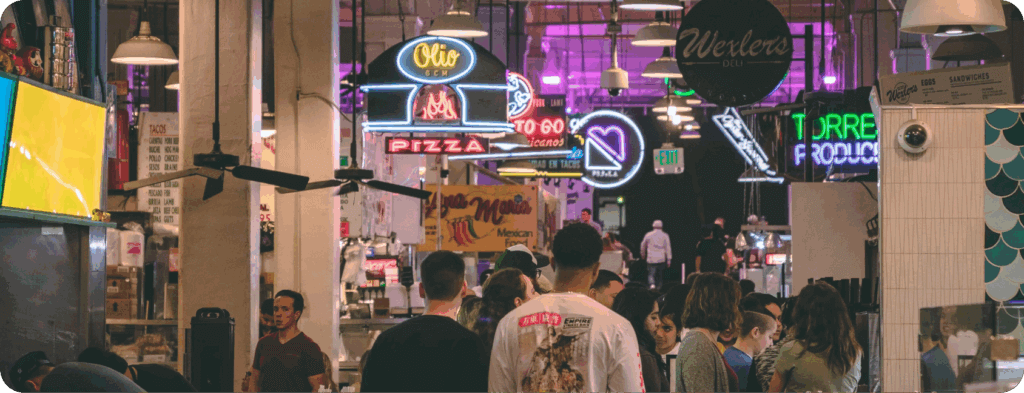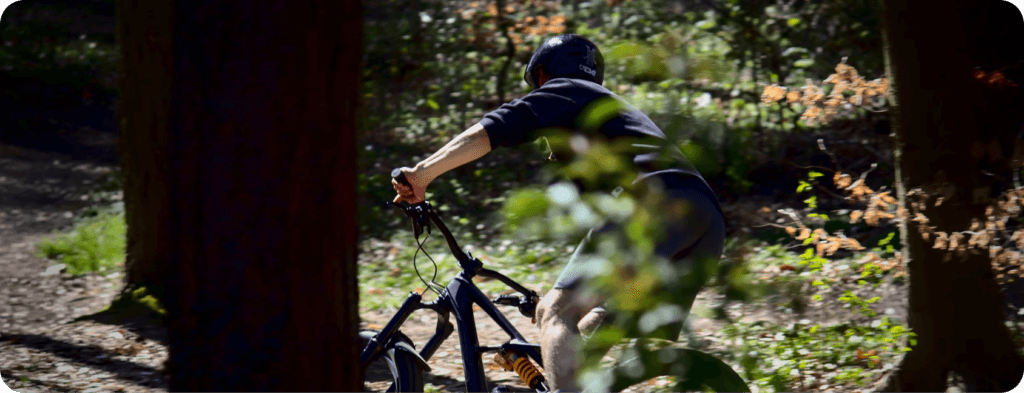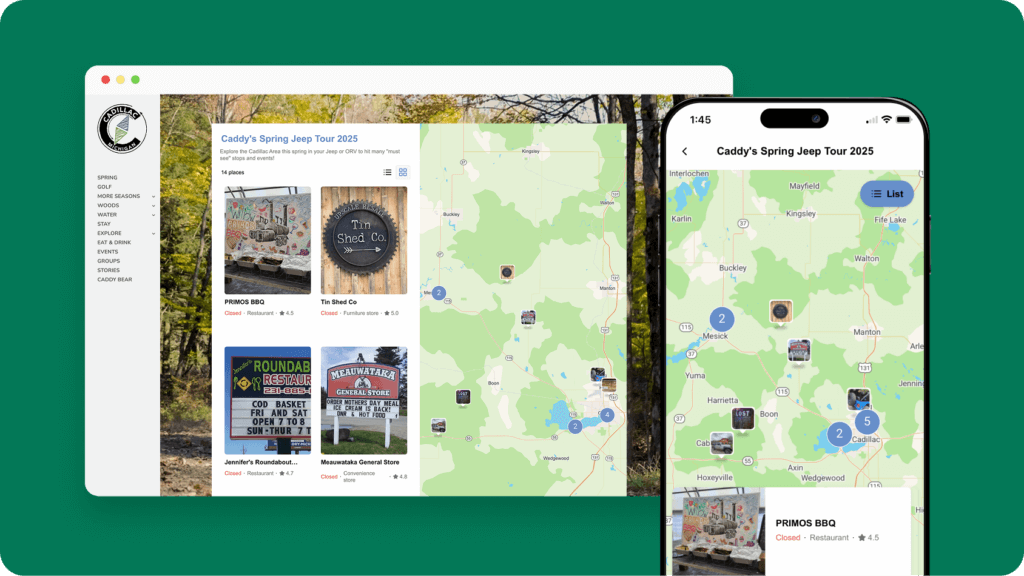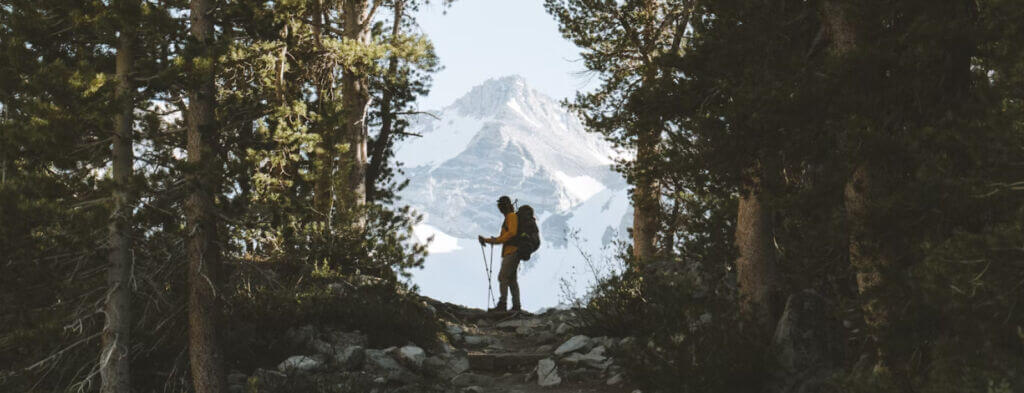
The way we travel has changed. A lot.
Years ago, destination marketing organizations (DMOs) would lean on travel agencies, billboards and brochures to attract tourists. While those strategies still have a place, tourism marketing has evolved and visitors want a different type of vacation than they did 20 years ago.
Today’s travelers are savvy. They still might find a destination through a billboard or brochure, but they will do the bulk of their planning using a bunch of different channels like social media, blogs, and influencers. Your tourism marketing strategy must meet them where they are to be successful.
So, what does resonate with today’s traveler, both digitally and in-market? 🤔
In this guide, we’ll dig into tactics, latest trends, and emerging tech that’ll help your DMO create stronger tourism marketing campaigns that resonate with your target audience 👌
What is Tourism Marketing?
Tourism marketing creates brand awareness and generates buzz around a destination, online and IRL.
Tourism marketing touches everything from DMOs to hotels, travel agents to tour operators, cultural sights to locally owned restaurants, campgrounds to cruise ships.
Its primary objectives are to increase visitor knowledge, encourage travel, and assist people throughout the travel decision-making process. This means a tourism strategy must stretch from the planning phase to when a visitor arrives to experience all a destination has to offer.
What are the major components of tourism marketing?
There are four major components of tourism marketing known as the “four A’s”:
🛌Accommodation. Where to stay, from mom-and-pop establishments to short-term rentals
🎢Attractions. Places to go/see, which will express the personality and history of your destination. Things to do for travelers of all stripes and preferences (thrill seekers, families, solo travelers… just to name a few!)
🛒Amenities. What amenities are on offer? These can be the special elements that make your destination unmissable
🚃 Access. The destination’s accessibility, which allows for a great travel experience across different types of travelers
These pillars answer essential questions for a prospective traveler — the “when, what, why, how and where?” — throughout every step of the travel experience.
However, tourism marketers must rethink how to approach each of these buckets.
The new generation of travelers want more out of their vacation. If they visit New York City, they want to see more than the Statue of Liberty and the Rockefeller Center. 95% of American travelers want to spend (at least some of) their trip experiencing something new and unique, and 42% of travelers want to explore Indigenous cultures and heritages on a trip.
The best way to tick all of these boxes is to use a wide range of tourism marketing strategies 👇
What are the Different Types of Tourism Marketing?
Tourism marketing can live on dozens of channels. Think social media, email marketing, advertising, cultural marketing, influencer marketing, out of home marketing, and print marketing… just to name a few.
Let’s take a closer look 👇
Content Marketing
Tourism content marketing is a broad strategy that covers everything from blogs to social media videos. This content aims to give potential visitors as much information and advice as possible to persuade them to come to your destination and help plan their trip.
The reason content marketing is at the top of our list is that even DMOs with limited budgets and bandwidth can use it to attract visitors. A really helpful written guide or Instagram Reel can build trust with an audience and put your destination on their radar to visit next.
Examples of tourism content marketing include:
✍️Blog posts. Writing blog posts like how-to guides and itineraries about your destination are valuable ways to connect with your target demographic.
📖Visitor guides. Guides are a great way for DMOs to shoot their shot and brag about the best bits of their destination. This content strategy is perfect for highlighting authentic cultural experiences, fantastic places to eat/drink, and any attractions your destination has that visitors can’t get elsewhere.
🎤Real person interviews. Interviews, case studies, and written content that tells your destination’s unique stories. These interviews are also a great way to share local knowledge so visitors can find activities and attractions off the beaten path. We recommend you capture these interviews on video so it’s easy to repurpose them for socials!
Social Media/Influencer Marketing
Social media and influencer marketing is fast becoming the most impactful channel for DMOs.
Beautiful Instagram images. Viral TikTok videos. Helpful content reels. These content strategies are all goldmines for DMOs to grab an audience’s attention and attract folks to their destinations.
According to our 2024 Trends Report, 90% of DMOs believe influencer marketing will continue to have a big impact in 2024, which is hardly surprising considering roughly 50 million people worldwide class themselves as content creators.
Why?
Simple. Travelers trust social media influencers (a lot) more than flashy marketing campaigns or shiny brochures. In fact, the overwhelming majority of people who follow an influencer will look to them for travel recommendations.
Examples of tourism social media and influencer marketing include:
📸Images. Think Instagram posts, carousels, and stories that show off the best bits of your destination.
🤳User-generated content (UGC). Repurposing content by folks who have actually experienced a place is arguably the best way to spread the word about a destination. Travelers will listen to other travelers about what place they should visit next. 🎞️Reels + short-form content. Videos and short, digestible Reels are a great way to get on your target audience’s radar.
@crowdriff love the ambition but we’re here to help take things off your plate, travel marketing besties 🫶 #marketingmemes #marketingproblems #marketinglife #travelmarketing #travelmarketer ♬ original sound – youngexwives
Email Marketing
This tourism marketing strategy is arguably the best way to talk straight to potential visitors.
Creating personalized content to land directly in someone’s inbox can grab their attention, educate them about your destination and link them to other content. For example, an email could talk about a local event or announcement, and then link out to other content like blog posts or travel guides to keep them engaged.
Examples of tourism email marketing include:
📰Regular newsletters. Recurring newsletters (e.g. monthly or quarterly) can keep your audience in the loop about upcoming events and sustainability campaigns, or educate them about local history and heritage.
🗓️Deals/events. Does your city have an annual event coming up? Or is there a sale at a local attraction that visitors can take advantage of? Announcing it over email is a great way to get the word out.
Out of Home Marketing
Billboards? Events?
Yup, these tactics—known as Out Of Home (OOH) marketing—are still very valuable for DMOs. A recent Comscore study found marketing like billboards and events led to around 22% of online activity like social media searches and website visits. When OAAA Harris conducted a poll about billboards, it found almost 50% of people will search for a brand online after seeing an OOH advertisement.
OOH marketing might not be the sexiest form of tourism marketing, but it’s still a great way to get on your audience’s radar.
Examples of tourism out of home marketing include:
🗞️Billboards/advertising. This is large-scale shoutouts about your destination. Think roadside billboards to get the word out about your destination, or advertising for special events on bus stops/posters.
🤝Trade shows/events. Meet-ups with other tourism operators are a great way to connect with other DMOs in your industry and get ideas. Example: The ECM Manifest brings European DMOs together to talk about sustainability, growth, and how to create collaborative experiences between countries.
Unsure which strategies to prioritize for your destination? That’s okay!
Let’s look at how these strategies can power your DMO to create content that resonates with your target demographic and brings more people to your destination 👇
Best Tourism Marketing Strategies
Marketing changes quickly, but keep in mind: that a trend isn’t always a flash in the pan. Set your destination up for long-term success by investing in these core strategies.
Create Evergreen Content To Use Across Multiple Channels
Each piece of long-form content or video that you create won’t come cheap. DMOS need to be savvy with their valuable budget and ensure content has a long shelf-life.
There’s a way to do just that. It’s called evergreen content. This type of content is basically stuff that won’t go out of date after a certain timeframe. For example, a DMO creating content about the Grand Canyon could put together a video about the history of the area as it won’t change—it will stay evergreen.
The most savvy way for DMOs to use this strategy is to create evergreen content, and then chop and screw those original stories into bite-size pieces. These chunks of content can then be distributed across a multitude of channels in slightly different formats.
Let’s say you interview a local business owner and it lasts for an hour. If you record this interview on video and ask them a range of questions (like where their favorite hidden gem in the area is, or what food visitors should try), this content can then be chopped up into chunks like:
🤳Instagram posts. Even if you don’t mention the local business owner, the food recommended by them could influence a series of posts about the best places to eat in your area
🐦Tweets. If the business owner reminisced about a piece of history in the area, this could then be repurposed into a series of tweets to expand on it and give tourists more knowledge
📽️Short-form videos. Every question the business owner answered could be chopped into several short-form videos. These videos are perfect for social platforms like TikTok and Instagram to grab people’s attention
If you go down the short-form video route, focus on making these chunks of content as engaging as possible. Experiment with mixing other images and videos you have on file with the interview videos to make it more interesting. For example, the interviewee may have mentioned a local festival they love. If so, splice the video of them talking with past footage of the festival to give visitors an idea of what’s so special about it.
Now, doing this takes time. And without the right assets, videos can be… well, a bit blah 🥱
We created CrowdRiff Intelligent Search to help DMOs find assets to match any campaign. For example, if you wanted more footage of the festival to splice into the interview, all you have to do is search for assets that you like and pick a platform for UGC content to be pulled from. CrowdRiff will then find content that’s already been uploaded and has UGC rights approved so you can add it straight to your content.
Pro-tip: If your DMO has established an effective SEO strategy — one that generates brand awareness and helps users navigate from curiosity to commitment — you’ll want to conduct periodic content audits and update your traffic-driving superstar content, as search engines favor recently published or updated content over something that is >12 months old.
Find Influencers Who Feel Authentic
Influencers are fastly becoming a top priority for DMOs—our Trends Report found 98% plan to pay for influencer content for their Instagram Reels this year 👀
And these influencers aren’t cheap.
In 2023, Statista reported 23% of marketers surveyed allotted >40% of their annual marketing budget to influencer partnerships. According to our 2024 Trends Report, DMOs are spending—on average—$500 for creators to make a piece of content.
The hard part for DMOs is finding an influencer partnership that’s authentic and can connect with a target audience. Consumers grow weary of being sold to and presented with perfection. Within the travel industry, in particular, influencers who present things as too polished or perfect can have the opposite effect.
For DMOs, finding an influencer that’s juuuuust right is a bit like searching for a needle in a haystack. An influencer not only needs to be authentic, but their fee needs to match a DMOs budget and the way they work must mesh with how the organization creates content.
A specialized service like CrowdRiff Creators can match your DMO with an influencer that fits your goals and brand. Our team actively finds creators whose values and branding align with yours so they create content that can seamlessly slot into your social media posts and short-form videos.
📸Read more about how Creators works here.
Lean on User-Generated Content (UGC)
It’s a renaissance for short-form video creators—UGC is now 5x more likely than any other type of content to convert an audience.
So, why is it so damn effective? 🤔
UGC doesn’t just add a healthy dose of authenticity to an Instagram post or TikTok Reel. It’s also a less “polished” version of tourism marketing. For people viewing UGC, it gives off a vibe of a real person experiencing your destination… because that’s exactly what it is.
The balancing act for DMOs is to be strategic about the assets they make in-house versus what they outsource to local UGC creators.
Townsville Enterprise experienced this recently. The DMO discovered awareness about its destination was low and wanted to get on more people’s radar, both locally and internationally. It also wanted to do it by being authentic and organic, rather than through polished campaigns.
It decided to leverage UGC and use visitors to tell its story and show other tourists why they should add the destination to their list. The DMO uses CrowdRiff to pull UGC straight from visitors’ social media so it can repurpose it on its website and its own social channels. User-generated videos have been particularly useful for filling a content gap in the DMOs strategy and have saved them from having to hire an in-house videographer.
The results speak for themselves. Since leveraging UGC, the DMO has seen a 70% spike in its audience taking action to book a vacation and they’ve seen a massive 116% boost in destination awareness 🥳
Pass the Mic to Underrepresented Creators
According to the U.S. Travel Association, “the travel industry employs a younger and more diverse workforce than many other sectors.”
True diversity and inclusion spans across race, ethnicity, gender, age, sexuality, neurodiversity, and socio-economic backgrounds. While the travel industry continues to make strides toward diversity, equity, and inclusion (DEI), diverse groups are still often under-represented in campaigns, advertising, storytelling, and inclusion in the C-suite.
Destination marketers can make telling more diverse stories a priority by implementing practices like:
- Creating opportunities to partner with BIPOC creatives. Allow them to share their stories on their own terms or hold social media take-overs to shine the spotlight on diverse stories
- Broadening your search for talent to include new and emerging voices, not just established creators
- Build relationships with small business owners in your community, and champion their businesses in your marketing materials
- Being mindful when you post about groups during specific times (e.g. Pride month) — are you engaging in rainbow capitalism, or are you supporting the LGBTQIA+ community year-round?
- Regularly refreshing your website imagery to show different types of people enjoying your destination
These practices allow your audience to see your destination from different points of view and celebrate every inch of it!
Get Smart About Asset Management
A solid tourism marketing strategy also relies on a toolkit to help your DMO do its best work.
Even if you leverage assets like UGC and influencer content, your DMO will still be responsible for the final output. When this happens, a digital asset management (DAM) tool to help your team deal with files, footage, and assets is worth its weight in gold.
Here are some reasons it makes sense to use a DAM:
- Metadata. Organize every asset in your database using licensing information, location, and permissions so they are easier to work with.
- Search. Scan your entire visual library using natural language (in up to six different languages) and filter assets by type, size, orientation, date taken, and more.
Say you want to whip up a Sunday morning post about the best brunch spots in a particular neighborhood. Just type in the spot (e.g. downtown Toronto) and add in “brunch”, and a bunch of ready-to-use assets will pop up:
A DAM is also handy if you hire external content creators as they can upload files straight to your DMO’s database.
For example, CrowdRiff’s Collector tool allows DMOs to easily collect and store high-resolution content from third parties. Just send your unique Collector link to your photographer or videographer, and content will be added straight to your library:

Next time you go to create a video or image carousel—the content will be ready for you 👌
Use AI to Take Over Manual Tasks
AI can be a powerful tool to help with the (boring) behind-the-scenes work that goes into tourism marketing.
Not only does AI allow a DMO to stretch its limited resources further, it also frees up time so your team can work on important tasks (and spend less time organizing assets). Some DMOs are experimenting with tools that craft AI-powered itineraries or generative AI to make image sourcing easier. But we think the real power of AI is its ability to take care of the small (but time-consuming tasks) like:
- Content editing. Look, we all take blurry and unusable images/videos. But if these files aren’t deleted, you will have to sift through content after it’s uploaded to find usable assets. Thanks to CrowdRiff’s machine-learning capabilities, blurry/low-quality content will be automatically detected and deleted to save you a ton of time
- Tagging. CrowdRiff’s DAM leverages automatic visual tagging with AI to identify themes and subjects of your imagery, so you can easily search for exactly what you need based on keywords.
Here’s what it looks like:

CrowdRiff scans and tags every frame of the video. Next time footage of mountain biking or a mountain range is needed, this asset will pop up immediately. Easy!
Are you ready to level up your tourism marketing strategy?
There you have it — an updated marketing plan for today’s evolving, dynamic tourism industry.
Audiences are evolving and they want authentic content to inspire their next vacation. Now that you know which channels to focus on and strategies to test, it’s time to get inspired. Use local creators, UGC and your DMOs unique expertise to show tourists why your destination should be the next one on their list.
Want to learn more?


